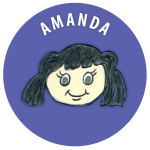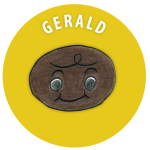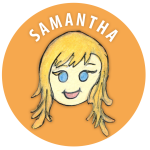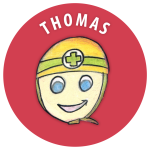What is Executive Function?
I started hearing about executive function when my son was about 5 years old and back then, there was very little information published about it. So it was frustrating to try to get a feel for what it was and why I had to start figuring it out when he was in kindergarten.
Fast-forward 10 years and there is a plethora of information. However, experts vary in their definition and focus.
Most executive function definitions speak to strategies for time management, organization, and the ability to complete tasks. These are important components and the ones most often sought. Yet, this is only part of executive function and doesn’t get to the heart of it.
Therefore, in this article, we widen the lens and simplify the information, so you walk away with the complete definition, the relationship to the Men in the Head ® characters for easy reference, step-by-step processes, skill building strategies for varying ages, and solutions to help prop up executive function if necessary.
In the simplest terms, executive function is the chief executive officer (CEO) of the brain and has four (4) critical parts:
- Working Memory
- Regulation
- Cognitive Flexibility
- Emotional Acuity
Working Memory – The ability to hold information in our minds and use it effectively.
Regulation – The ability to start and stop based upon thoughts, impulses, distractions, temptations and habits.
Cognitive Flexibility – The ability to switch gears, adjust, rethink, or change perspective based on prior experiences or new and changing information.
Emotional Acuity – The ability to be aware of emotions of self and others with keenness or perception.
Executive function is crucial for every child’s learning and development academically as well as socially. Most experts speak to the academic aspects of executive function, but leave out the social implications. We will include both.
Simply put, executive function involves the abilities of awareness, control, and nimbleness for academic and social success.
Step-By-Step Processes:
Academic Success
What is the step-by-step process for academic success? There are several types of executive function prowess that a child needs for academic success:
- Single Task Management
- Multiple Task Management
- Long Term Project Plan
- Research Paper Template
- Study Skills
We will outline the steps involved in each type of activity.
Typical Story:
“Tim, have you finished your homework?” his mother asks as she is cooking dinner.
“Yes. It’s all done,” Tim answers as he fires up his Xbox to play FIFA with his friends.
His mother knows better. She needs to ask more detailed questions.
“Did you finish math?”
“Yup.”
“Did you do Spanish?”
“We didn’t have any today.”
“Did you have any science homework?”
“Umm….”
“How about English? Did you finish your paper and pass it in?”
“I don’t remember. I think so. I don’t know.” Tim says as he throws down the controller and stomps upstairs to his bedroom.
His mother follows him and watches as he struggles with many crumbled papers in his backpack.
She has no idea how he can find anything in it.
“Where is your planner? Did you write down your assignments today?” she asks, already knowing the answer.
“I can’t find my planner.”
Here we have just another typical day for Tim. No planner. No idea of his homework assignments. No idea of his status on said homework assignments. Today is just another day in the life of this disorganized 6th grader.
Okay, Tim needs help with his ability to plan, organize and prioritize his activities. He also may need help with rewards processing (playing Xbox before he finishes his homework).
Single Task Management:
So, let’s outline the steps Tim needs to complete one homework assignment.
| Single Task Management | One homework assignment that is due the next day |
| · Remember that you have the task | · Homework assignment written in planner and knowing where that planner is at the right moment |
| · Analyze a task to figure out what needs to be done | · Look at homework assignment and know how to complete it |
| · Plan how to handle the task | · Read first, then write or do the easy math questions and then the more difficult ones, make flash cards and then study, etc. |
| · Organize information and materials to complete task | · Get paper, sharpen pencil, find markers, get the book or worksheet, find and print out computer article, etc. |
| · Break down the task into small steps | · Read the instructions, read the story, put name at top of page, write the responses, do the math sums, etc. |
| · Manage time to finish task | · Be aware of how much time it will take to do the homework assignment and take/make the time to do it |
| · Fully complete task | · Print out, staple it together, write name at top, complete whatever finishing the assignment needs· Put into right folder in backpack· Pass it into the teacher the next day |
These are a lot of steps just to complete one homework assignment and most children need to do these every school night from 1st grade through college.
(I have an idea that our children are not developmentally ready to have homework until at least the 5th grade, but that’s just me.)
Multiple Tasks:
Most children have more than one homework assignment to complete every night, so let’s outline the steps Tim needs to complete more than one homework assignment.
| Multiple Task Management | More than one homework assignment that is due the next day |
| · Remember that you have more than one task, so remember all of the tasks | · All of the homework assignments written in planner and knowing where that planner is at the right moment |
| · Analyze the tasks to figure out what needs to be done | · Look at all of the homework assignments and know how to complete them |
| · Prioritize the tasks | · Make a plan of which assignment to tackle first, then second, etc. |
| · Plan how to handle the tasks | · Read first, then write or do the easy math questions and then the more difficult ones, make flash cards and then study, etc. |
| · Organize information and materials to complete tasks | · Get all of the information and materials ready for all of the homework assignments. Get paper, sharpen pencil, find markers, get the book or worksheet, find and print out computer article, etc. |
| · Adjust thinking as necessary to juggle the tasks | · Depending upon how much time has passed versus time allotted, make adjustments as necessary or get help if needed from other students, teachers or parents |
| · Break down each of the tasks into small steps | · Read the instructions, read the story, put name at top of page, write the responses, do the math sums, etc. |
| · Manage time to finish tasks | · Be aware of how much time it will take to do the homework assignment and take/make the time to do it |
| · Make final adjustments, as necessary | · Stumped by an assignment, make a plan to get help, etc. |
| · Fully complete tasks | · Print out, staple it together, write name at top, complete whatever finishing the assignment needs· Put into right folder in backpack· Pass it into the teacher the next day |
Long Term Project Plan:
Tim has a long-term project, let’s outline the steps he needs to handle his long-term project.
| Long Term Project | Project Due in a Few Days or Weeks |
| · Know of the project, understand the rubric and know the due date | · Learn about the components of the project, know what the teacher expects, and learn the due date |
| · Remember the project | · Remember the project, even though it is not due the next day, and put the due date into the planner |
| · Analyze the project and breakdown the tasks | · Look at each of the components of the project and know how to complete each one |
| · Prioritize the tasks over time (days or weeks) | · Prioritize which part to complete first, etc. and put each part into the planner |
| · Plan how to handle the tasks | · Make a plan for each task necessary to complete the project |
| · Organize information and materials to complete tasks | · Get all of the information and materials ready for all of the project components. Get poster board, paper, sharpen pencils, find markers, get the books, find and print out computer articles, etc. |
| · Adjust thinking as necessary to juggle the tasks | · Depending upon how much time has passed versus time allotted, make adjustments as necessary or get help if needed from other students, teachers or parents |
| · Break down each of the tasks into small steps | · Complete each part of the project and break down any of the uncompleted tasks |
| · Manage time to finish project | · Make time to complete each part of the project, adjust time if not completing as scheduled |
| · Make final adjustments, as necessary | · Stumped by an assignment, make a plan to get help, etc. |
| · Fully complete project | · Print out, staple it together, write name at top, complete whatever finishing the project needs· Put into right folder in backpack· Pass it into the teacher on the due day |
A long-term project requires more from a child. It requires more organization, prioritization, time management, and cognitive flexibility to make ongoing adjustments as necessary. It may also require more regulation to keep on schedule and finish the intermediate tasks before the due date.
Research Paper Template:
Thankfully, Tim does not have a research paper, but he will one day. Here are the steps he needs to complete a research paper.
| Research Paper | Research Paper Due in a Few Days or Weeks |
| · Know of the research paper, choose a topic, understand the rubric, learn how to write a bibliography and make footnotes, and know the due date | · Learn about the research paper, choose a topic, understand the components of the research paper, know what the teacher expects, and learn the due date |
| · Remember the research paper and think about the topic | · Remember the research paper, even though it is not due the next day, and put the due date into the planner |
| · Analyze the research paper project and breakdown into smaller tasks for research, writing and formulating the bibliography and footnote materials | · Look at each of the components of the research paper, derive a plan based upon the topic, and know how to complete each of the tasks for researching, writing and formulating |
| · Prioritize the tasks over time (days or weeks) | · Prioritize which part to complete first, etc. and put each part into the planner |
| · Plan how to handle the tasks | · Make a plan for each task necessary to complete the research paper |
| · Organize information and materials to complete tasks | · Get all of the information and materials ready for all of the project components. Get poster board, paper, sharpen pencils, find markers, get the books, find and print out computer articles, etc. |
| · Research online and written materials, make notes for bibliography and footnotes | · Conduct research, keeping on topic, and gather all information for bibliography and footnotes |
| · Determine perspective of topic | · Determine whether for or against, compare/contrast, etc.) |
| · Adjust thinking as necessary to juggle the tasks | · Depending upon how much time has passed versus time allotted, make adjustments as necessary or get help if needed from other students, teachers or parents |
| · Break down each of the tasks into small steps | · Complete each part of the paper and break down any of the uncompleted tasks |
| · Make an outline | · Outline paper with introduction, supporting details and conclusion |
| · Write a draft | · Write a rough draft without bibliography and footnotes |
| · Review the draft with the teacher or do a peer review | · Review with teacher or peers, take note of recommendations and edits as necessary |
| · Manage time to finish paper | · Make time to complete each part of the paper, adjust time if not completing as scheduled |
| · Gather all materials for bibliography and footnotes | · Finalize bibliography and footnote materials |
| · Make final adjustments, as necessary | · Write final draft and get recommendations and make edits |
| · Fully complete research paper | · Print out final copy, do any corresponding art work, staple it together, write name at top, complete whatever finishing the paper needs· Put into right folder in backpack to pass in or email to teacher on due date |
Writing any paper involves planning and flexible thinking. Research papers have the added element of gathering, synthesizing, and sorting information in order to stay on topic and support whatever position the writer has taken for the paper. In addition, details must be documented and included in the final work as part of a bibliography and footnote material.
Study Skills:
Tim needs to know how to study. Here is an outline for study skills.
| Study Skills | Test in a Few Days or Weeks |
| · Know of the test, understand the rubric and know the test date | · Learn about the components of the test, know what the teacher expects, and learn the test date |
| · Remember the test | · Remember the test, even though it is not due the next day, and put the test date into the planner |
| · Analyze the test and breakdown the tasks necessary to study | · Learn the components of the test and prepare to study for each part |
| · Prioritize the study tasks over time (days or weeks) | · Prioritize which part to study for first, etc. and put each part into the planner |
| · Plan how to handle the study tasks | · Make a plan for each study task necessary to prepare for the test |
| · Organize information and materials to complete study tasks | · Get all of the information and materials ready for the test – study guide, flashcards, mnemonics, etc. |
| · Adjust thinking as necessary to juggle the tasks | · Depending upon how much time has passed versus time allotted, make adjustments as necessary or get help if needed from other students, teachers or parents |
| · Break down each of the tasks into small steps | · Complete each part of the study plan and break down any of the uncompleted tasks |
| · Manage time to finish studying | · Make time to complete each part of the test plan, adjust time if not completing as scheduled |
| · Make final adjustments, as necessary | · Stumped by a certain part of the study material, get help |
| · Take the test | · Get enough sleep, have a good breakfast, take the test |
For each type of task, the steps are relatively the same. They just build upon each other. If a child is having trouble completing one assignment, multiple assignments will be more problematic.
If a child has mastered the art of completing things due the very next day, perhaps he or she will need help completing the longer term projects. If a child has mastered completing projects, perhaps he or she will need help developing study skills.
Again, these steps just build upon each other. Knowing the steps for completing assignments helps in navigating the ever-growing requirements.
Social Success –
As executive function is working memory, regulation, cognitive flexibility and emotional acuity, social success is completely dependent upon these skills.
Excellent communication skills require starting a conversation, participating in that conversation, paying attention, listening to others, waiting your turn, staying on topic, and ending a conversation.
Mastering social behavior involves sharing space, sharing materials, waiting, taking turns, trying new things, respecting ideas of others, participating with others, and choosing friends.
We assume there are no non-verbal communication or significant lack in emotional intelligence and yet, communication and social behavior relies on a person’s awareness, control, and nimbleness.
Fun Activities that Build Executive Function Skills Over the Years:
We are not born with executive function skills, they are developed over time. Remember we are building our working memory, regulation, cognitive flexibility, and emotional acuity.
Here are some fun activities to do with your children that help build these skills.
| Birth – 3 Years | 3 – 5 Years |
| Playing – peek-a-boo, pat a cake, hide and seekTalkingSingingRhymingImitating gamesStorytellingTurn taking gamesMatching or sorting gamesFreeze dance or tag
Imaginary play |
Imaginary playStorytellingClimbing structures, obstacle coursesYoga posesFreeze dance, musical chairsRepeating songsMatching/sorting activitiesPuzzlesCooking
Social stories |
| 5 – 7 Years | 7 – 12 Years |
| Card/board games – fish, old maidMatching games – crazy eights, UnoFast response gamesStrategy games such as checkers, mancala, Battleship!Red light/green lightSimon saysSporting activitiesJumping ropeSinging in rounds, rhyming, hand or body movements
Puzzles, mazes Guessing games I-spy games Social stories |
More difficult card games – rummy, cribbage, hearts, pokerMore difficult board games – SpitMore difficult strategy games – chess, Stratego, RiskOrganized sportsJump rope gamesLaser tag, paint ballMusical instrumentForeign languageDance
Brain teasers – crossword puzzles, hangman
|
| Teenage Years | |
| Helpful activities: | Teenagers need help navigating the executive function requirements, so we can help with the following: |
| Self-talk for motivation and regulationPersonal journalOrganized sportsYoga & meditationMusicTheaterStrategy games & logic puzzlesComputer – Mindcraft, Luminosity, Cogmed | Goal settingCalendarPlan developmentSocial issuesBehavior modificationStudy skills |
Solutions for Propping Up Weaker Executive Function Skills:
To improve executive function, here are basics for every age:
- Good nutrition
- Body movement
- Adequate sleep
- Safe physical and emotional environment
Academically:
Also, once your child starts getting regular homework assignments, here are a few tips to help YOU:
- Have a regular place to store backpacks, lunch boxes, sporting equipment and activity bags. We have a separate bag for everything and keep them all in one place.
- Have materials ready, available and in one place – pens, pencils, markers, erasers, paper, staplers, tape, glue sticks, poster board, construction paper, white out, rulers, calculators, etc. (I take stock and replace markers, paper, etc. twice a year – once at the beginning of school and once around February vacation).
- If your school does not provide a planner, buy one.
- Have a place to archive papers – either a notebook with tabs or a bin for file folders.
That’s it. My two handle all of their own work and organization, I just provide the materials.
General Tips:
- Step by step written instructions
- Checklists
- Visual aids
- Graphic organizers
- Time aids – watches, calendars, alarms, timers
- Agendas or planners
- Transition plans
- Minimize clutter
- Separate work area with all materials
- Mnemonic study aids
- Brain gym exercises – Smart Moves
- Self-talk
Socially:
Tips for Social Development:
- Play dates
- Imaginary play
- Turn taking games
- Plan social interactions
- Role playing
- Incident modeling
- Social stories
Men in the Head® Characters:
We introduce the characters as a way to relate information. For executive function, we need Amanda for working memory and cognitive flexibility. We need Gerald for impulse readiness and control, otherwise known as regulation, Samantha for emotional awareness and perceptivity, and Thomas for good judgment and rewards processing (also part of regulation).
| Executive Function | |
 |
 |
| Smarts | Impulses |
 |
 |
| Feelings | Safety |
When you first hear that your son or daughter has executive function issues, you come across a great deal of information and advice. Hopefully, the information is informative and actionable and the advice – good.
In most cases, the executive function issues will not be the sole ones. In most cases, these issues will accompany a number of others – relating to ADHD, ADD, SPD, ASD or language based learning issues. Accordingly, sifting through all of the information, strategies, and accommodations is overwhelming.
These characters help you:
- Act as a placeholder to put the different pieces of information while making progress along ALL areas of concern
- Talk to your son or daughter about his or her issues
Placeholder:
When working with schools and therapists, I found each to have their own agendas and areas of focus and discipline. This is appropriate, however, as my son’s mother, I needed to be the GM of all of the agendas items and discipline areas. I would find that we would make headway in one area and completely ignore another. Without placeholders, it was difficult to track and ensure we were achieving the objectives I wanted my son to achieve.
Discuss with Child:
It is much easier to talk to your child about helping Amanda, Gerald, Samantha or Thomas then it is to talk about working memory, cognitive flexibility, regulation, feelings or rewards processing.
“Mom, why do I need to go to OT again?”
“You need to go to OT today to help your friends. Amanda needs help with her smarts, and Gerald with his impulses.”
Versus.
“You need to go to OT today to develop your working memory and learn to control your impulses.”
Hmm…which answer do you think your child will respond to better?
Conclusion:
We are not born with executive function skills, working memory, regulation, cognitive flexibility and emotional acuity. We build them over time. That is good news. It’s good news as we can give our children skill building activities as well as solutions to prop up weaker executive function abilities.
The Men in the Head® characters help you remember the components of executive function:
Amanda – working memory & cognitive flexibility
Gerald – regulation (impulsivity)
Samantha – emotional acuity
Thomas – regulation (rewards processing)
Executive function is crucial and involved in our lives everyday, so understanding it and knowing how to build and support it, is critical for academic and social success.
Resources:
AdditudeMag.com
Baltimoreschild.com
Brainbalancecenters.com
Childmind.org
Cited.org
Developingchild.harvard.edu
Do2learn.com
Helpforld.com
Mtsd.k12.nj.us
Parents.com
Pediatricsafety.net
Understood.org
WebMD.com



Wonderful, comprehensive plan for school and play.
Thank you – just what I was going for!!!